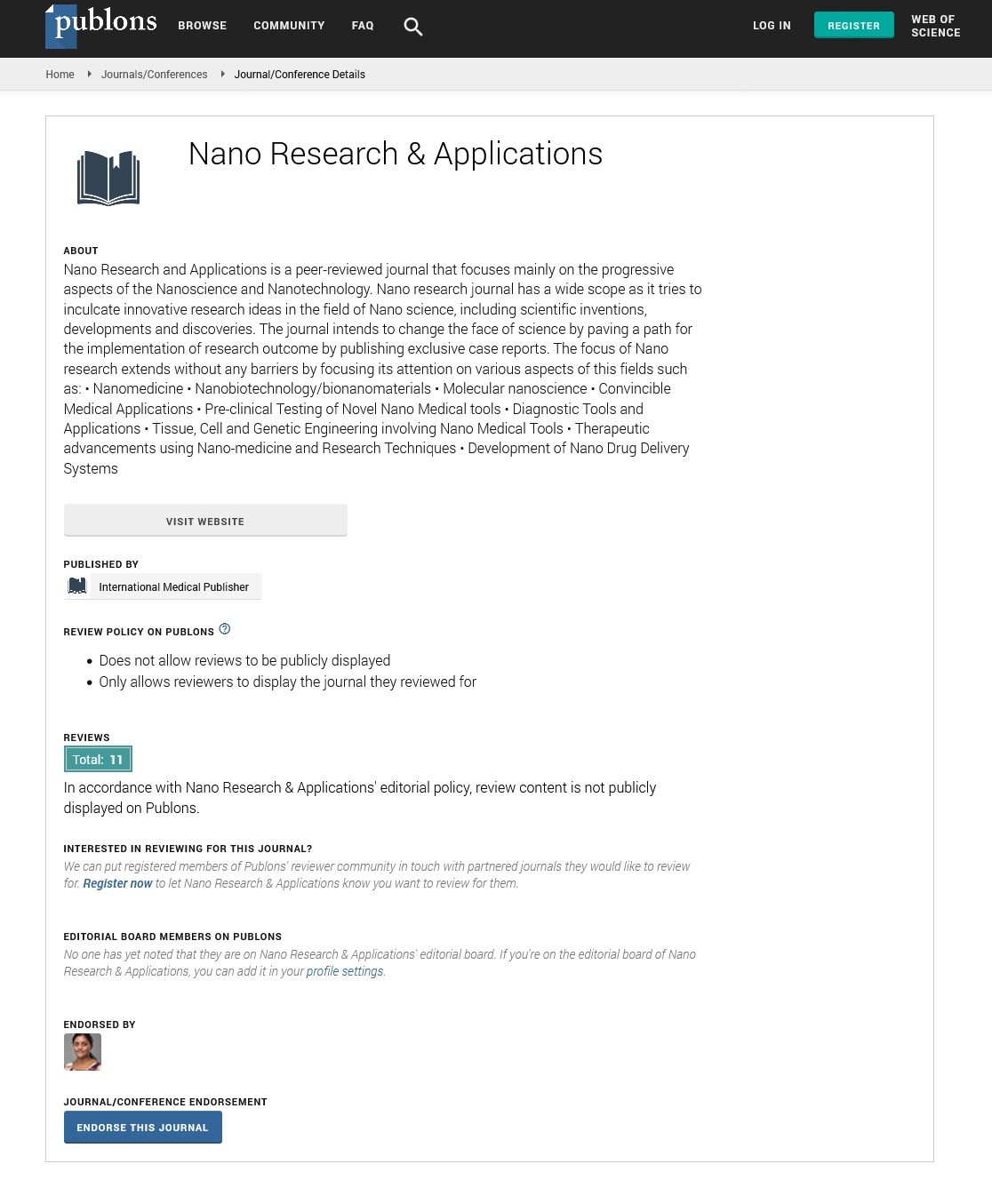ISSN : 2471-9838
Nano Research & Applications
Design of 3D bioprinted scaffolds for cartilage regeneration
17th Edition of International Conference on Emerging Trends in Materials Science and Nanotechnology
April 26-27, 2018 Rome, Italy
Gloria Pinilla Garcia
REGEMAT 3D, Spain
Posters & Accepted Abstracts: Nano Res Appl
DOI: 10.21767/2471-9838-C1-009
Abstract
Cartilage is a dense connective tissue with limited self-repair properties. Currently, the therapeutic use of autologous or allogeneic chondrocytes makes up an alternative therapy to the pharmacological treatment. The design of a bioprinted 3D cartilage with chondrocytes and biodegradable biomaterials offers a new therapeutic alternative able of bridging the limitations of current therapies in the field. We have developed an enhanced printing processes-injection volume filling (IVF) to increase the viability and survival of the cells when working with high temperature thermoplastics without the limitation of the scaffold geometry in contact with cells. We have demonstrated the viability of the printing process using chondrocytes for cartilage regeneration. An alginate-based hydrogel combined with human chondrocytes (isolated from osteoarthritis patients) was formulated as bioink-A and the polylactic acid as bioink-B. The bioprinting process was carried out with the REGEMAT V1 bioprinter (Regemat 3D, Granada-Spain) through an IVF. The printing capacity of the bioprinting plus the viability and cell proliferation of bioprinted chondrocytes was evaluated after five weeks by confocal microscopy and alamarBlue assay (Biorad). Results showed that the IVF process does not decrease the cell viability of the chondrocytes during the printing process as the cells do not have contact with the thermoplastic at elevated temperatures. The viability and cellular proliferation of the bioprinted artificial 3D cartilage increased after five weeks. In conclusion, this study demonstrates the potential use of Regemat V1 for 3D bioprinting of cartilage and the viability of bioprinted chondrocytes in the scaffolds for application in regenerative medicine. bd1@regemat3d.com
Google Scholar citation report
Citations : 387
Nano Research & Applications received 387 citations as per Google Scholar report
Nano Research & Applications peer review process verified at publons
Abstracted/Indexed in
- Google Scholar
- China National Knowledge Infrastructure (CNKI)
- Directory of Research Journal Indexing (DRJI)
- WorldCat
- Publons
- Secret Search Engine Labs
- Euro Pub
Open Access Journals
- Aquaculture & Veterinary Science
- Chemistry & Chemical Sciences
- Clinical Sciences
- Engineering
- General Science
- Genetics & Molecular Biology
- Health Care & Nursing
- Immunology & Microbiology
- Materials Science
- Mathematics & Physics
- Medical Sciences
- Neurology & Psychiatry
- Oncology & Cancer Science
- Pharmaceutical Sciences
